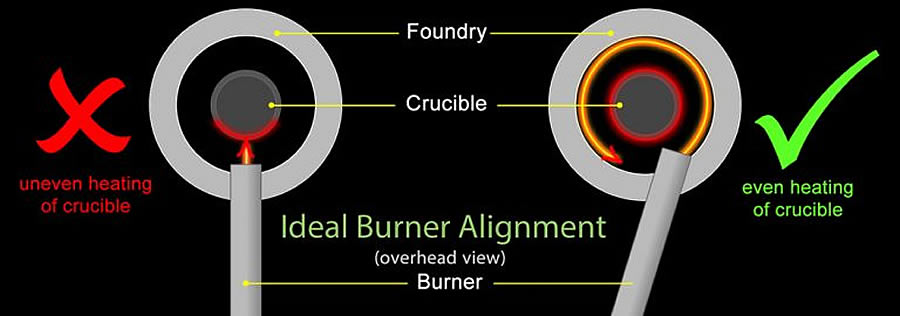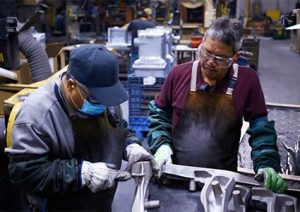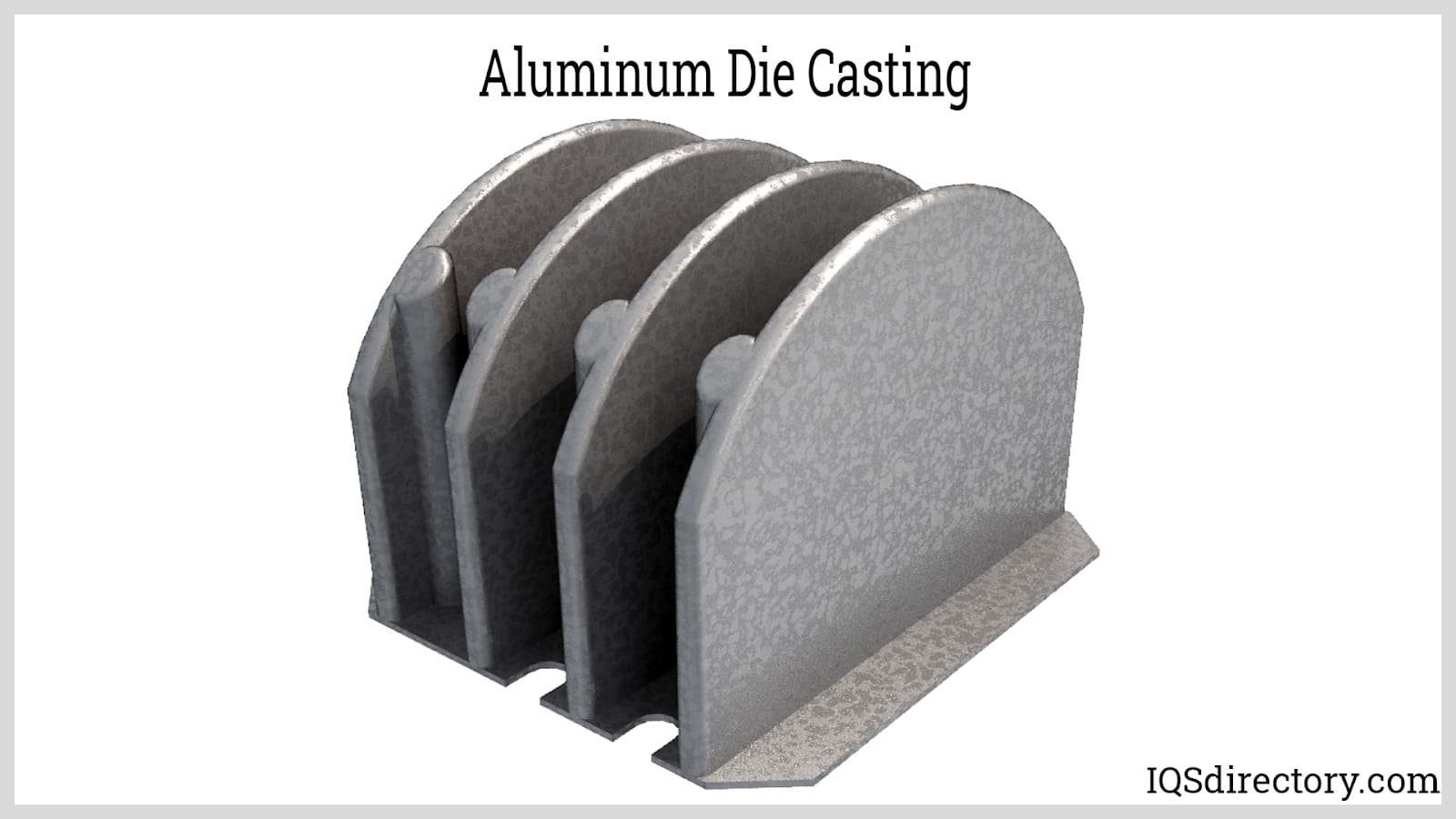How Aluminum Foundry Adds To Innovations in Aerospace Design
Aluminum factories are important to advancements in aerospace engineering. They create light-weight, high-strength components that are essential for modern-day aircraft. Through sophisticated casting techniques, these foundries develop intricate geometries that boost structural stability. Furthermore, the development of remarkable Aluminum alloys sustains the market's concentrate on fuel effectiveness and sustainability. Obstacles continue to be in the production procedure. Recognizing these aspects discloses the profound influence of Aluminum on aviation's future.
The Value of Lightweight Materials in Aerospace Layout
As the aerospace sector proceeds to evolve, the value of light-weight products ends up being significantly obvious. The demand for performance and sustainability drives designers to focus on using products that minimize general weight without compromising architectural honesty. Light-weight materials, especially Aluminum, play a vital role in enhancing gas performance, boosting haul capacity, and increasing the overall performance of airplane.
Moreover, the combination of these products enables for innovative designs, making it possible for manufacturers to create more aerodynamic forms that can withstand extreme problems. The decrease in weight not only decreases functional costs yet also adds to a lowered ecological footprint, lining up with worldwide initiatives toward sustainability in air travel.
Advanced Spreading Techniques in Aluminum Foundries
Advanced spreading strategies in Aluminum factories play an essential role in aerospace engineering by enabling the manufacturing of light-weight and precise elements. Innovations in mold layout and accuracy casting processes are necessary in achieving suitable performance and structural stability. In addition, the development of light-weight alloys enhances the general effectiveness and efficiency of aerospace applications.
Innovative Mold And Mildew Design
Innovative mold and mildew style plays a crucial function in the performance and effectiveness of Aluminum factories, particularly within the aerospace sector. By leveraging sophisticated materials and methods, contemporary mold and mildews can be crafted to stand up to high temperatures and pressures, ensuring peak efficiency during the spreading process. These designs usually incorporate complicated geometries that permit the manufacturing of lightweight yet structurally audio parts, essential for aerospace applications. Additionally, the usage of computer-aided style (CAD) software application facilitates precise modeling, making it possible for shops to refine and mimic mold layouts prior to physical manufacturing starts. This not just improves the high quality of actors parts yet likewise lowers waste and preparation, bring about substantial price financial savings. Overall, innovative mold and mildew design is a foundation of progression in Aluminum Foundry technology for aerospace design.
Precision Casting Processes
The effectiveness of innovative mold and mildew designs effortlessly integrates with accuracy spreading processes, which are essential for generating top quality Aluminum components in aerospace design. These processes, consisting of sand spreading, pass away spreading, and investment casting, assure the creation of complicated geometries with tight tolerances. Advanced methods like vacuum cleaner casting and stress pass away casting enhance the stability and surface area coating of the final products. Accuracy casting minimizes material waste while maximizing the mechanical homes of Aluminum, vital for aerospace applications. On top of that, employing real-time surveillance and progressed simulation devices throughout the casting procedure enables immediate changes, leading to improved high quality control. Jointly, these accuracy spreading processes setting Aluminum factories at the leading edge of aerospace advancement, sustaining the sector's need for integrity and efficiency.
Lightweight Alloy Growth
As aerospace engineers look for to enhance gas effectiveness and efficiency, light-weight alloy advancement comes to be an important focus in Aluminum shops. These shops employ sophisticated casting techniques to develop alloys that supply superior strength-to-weight ratios. Innovations in alloy composition, including the incorporation of aspects like lithium and magnesium, make it possible for the manufacturing of materials that withstand severe problems while decreasing total airplane weight. Methods such as die casting and financial investment casting promote the accuracy production of complicated forms, which are critical for aerospace applications. Additionally, recurring research study aims to optimize these alloys for boosted mechanical buildings and raised longevity. By focusing on lightweight alloy advancement, Aluminum foundries greatly contribute to the evolution of aerospace engineering, leading the method for more lasting and effective aircraft styles.

Enhancing Architectural Honesty Through Aluminum Elements
Aluminum components use considerable advantages in improving architectural integrity within aerospace engineering. Their light-weight nature adds to total efficiency while maintaining strength, which is essential for airplane efficiency. In addition, the anxiety resistance buildings of Aluminum assistance assure the toughness and dependability of aerospace structures under various operational problems.
Light-weight Material Benefits
While standard materials usually jeopardize weight for strength, using Aluminum elements in aerospace engineering supplies significant advantages in structural honesty. Aluminum's lightweight nature adds to general layout efficiency, enabling more streamlined aircraft that eat much less gas, thus enhancing sustainability. The product's exceptional strength-to-weight proportion assurances that parts maintain longevity without adding unnecessary mass. This high quality promotes boosted efficiency and agility in Bonuses flight, in addition to enhanced payload capabilities. Additionally, Aluminum's resistance to rust extends the lifespan of aerospace structures, minimizing maintenance prices and improving safety and security. As manufacturers significantly embrace Aluminum alloys, the aerospace industry experiences a transformative change towards much more efficient and effective engineering remedies that focus on both performance and environmental obligation.
Anxiety Resistance Features
Different materials have one-of-a-kind buildings, Aluminum's remarkable stress resistance stands out as an essential factor in improving the architectural go to these guys integrity of aerospace components. This resistance plays an essential duty in ensuring that aircraft can endure different functional stress and anxieties, including tiredness, impact, and ecological conditions. Aluminum alloys, particularly crafted for aerospace applications, display high tensile stamina while maintaining light-weight characteristics, enabling engineers to develop extra efficient structures - Aluminum Foundry. In addition, the capacity of Aluminum to endure cyclic loading without substantial contortion adds to the durability and integrity of aerospace parts. As innovations proceed in Aluminum Foundry strategies, the development of stress-resistant Aluminum elements promises more improvements in performance, safety and security, and efficiency across the aerospace market, strengthening Aluminum's function as a preferred product in contemporary engineering
Fuel Efficiency Improvements Driven by Aluminum Innovations
As the aerospace industry looks for to improve gas performance, innovative usages of Aluminum have arised as a vital solution. Aluminum's lightweight nature significantly lowers aircraft weight, enabling for lower fuel intake throughout flight. This decrease in weight is important, as also tiny decreases can result in substantial enhancements in overall gas economic situation.
Advanced Aluminum alloys, created for boosted strength and longevity, enable makers to create parts that maintain structural integrity while reducing mass - Aluminum Foundry. Additionally, the integration of Aluminum in airframes and engine components helps with improved aerodynamics, contributing to lowered drag and enhanced effectiveness
The adoption of Aluminum in aerospace not only fulfills the demand for fuel-efficient layout yet also straightens with regulatory stress for lower discharges. As these advancements remain to progress, they play a significant function in setting brand-new standards for gas efficiency, guaranteeing that the aerospace sector can meet growing ecological and financial difficulties.

The Role of Aluminum in Sustainable Aviation Practices
The boosting focus on sustainable air travel methods has actually placed Aluminum as a crucial product in the mission for greener airplane layout. Recognized for its light-weight buildings, Aluminum substantially decreases aircraft weight, leading to reduced gas intake and emissions. Its recyclability better enhances its sustainability account, as Aluminum can be recycled forever without loss of high quality. This particular supports a circular economic situation within the aeronautics market, lessening waste and resource deficiency.
Developments in Aluminum alloys have boosted their stamina and corrosion resistance, permitting for longer service life and lowered upkeep needs. These innovations facilitate the advancement of a lot more effective airplane frameworks, adding to general sustainability initiatives. Additionally, Aluminum's thermal conductivity plays an important function in energy-efficient designs, improving systems such as heat exchangers. Collectively, these attributes underscore Aluminum's crucial role ahead of time sustainable aeronautics, aligning with global campaigns intended at reducing the ecological impact of flight.
Obstacles Dealt With by Aluminum Foundries in Aerospace Production
While Aluminum find out this here shops play a vital function in aerospace manufacturing, they deal with substantial obstacles that can impact manufacturing performance and high quality. One significant difficulty is the stringent quality control standards called for in the aerospace market. Any issue can compromise safety and performance, requiring strenuous inspection processes that expand manufacturing timelines. Additionally, shops commonly compete with changing basic material costs, which can impact rates and productivity. The intricacy of Aluminum alloys made use of in aerospace applications additional makes complex the manufacturing process, as accurate solutions are critical for achieving preferred mechanical residential properties. Experienced labor scarcities impede the capacity to preserve top quality manufacturing levels. Ultimately, environmental policies impose constraints on exhausts and waste monitoring, calling for shops to buy sustainable techniques, which can be cost-prohibitive. These aspects collectively produce a landscape where Aluminum shops must continuously adapt to meet the evolving demands of aerospace manufacturing while ensuring security and compliance.
Future Trends in Aluminum Applications for Aerospace Engineering
With innovations in innovation and increasing demands for performance, the future of Aluminum applications in aerospace engineering is positioned for substantial transformation. The assimilation of cutting-edge Aluminum alloys and composites is anticipated to enhance strength-to-weight proportions, bring about more fuel-efficient airplane designs. Additionally, advancements in additive production methods will permit the manufacturing of complicated Aluminum structures that were previously difficult, optimizing efficiency and decreasing waste.

Sustainable methods will certainly play a vital function, with an expanding emphasis on reusing Aluminum to decrease ecological impact. The aerospace sector is likely to embrace smarter producing processes, such as automation and expert system, making sure better and accuracy in Aluminum components. Partnerships in between Aluminum shops and aerospace companies will cultivate research study and advancement, paving the way for brand-new applications that satisfy the rigorous requirements of modern-day aerospace engineering. In general, the future looks assuring for Aluminum's function in forming the skies
Frequently Asked Inquiries
What Are the Environmental Influences of Aluminum Production in Aerospace?
The ecological impacts of Aluminum manufacturing in aerospace include substantial power usage, greenhouse gas emissions, and environment interruption. Furthermore, mining processes can result in soil degradation and water contamination, raising issues regarding sustainability and environmental equilibrium.
Exactly How Does Aluminum Compare to Other Products in Aerospace Applications?
Aluminum offers a special mix of lightweight residential properties, corrosion resistance, and cost-effectiveness compared to various other materials. Its high strength-to-weight proportion makes it especially useful for aerospace applications, boosting fuel efficiency and overall performance in airplane style.
What Certifications Do Aluminum Foundry Workers Requirement for Aerospace Projects?
Aluminum Foundry workers need specific training in metallurgy and spreading techniques, together with expertise of aerospace sector standards. Accreditations in quality assurance and safety and security procedures are likewise necessary to guarantee compliance with strict aerospace job requirements.
Exist Any Kind Of Security Interest In Making Use Of Aluminum in Aerospace Engineering?
Safety and security issues relating to Aluminum in aerospace engineering consist of vulnerability to anxiety, fatigue, and rust fractures. Appropriate therapy and alloy selection are necessary to minimize these threats, guaranteeing architectural honesty and overall safety in aerospace applications.
Just How Does Aluminum Recycling Benefit the Aerospace Industry?
Aluminum reusing considerably profits the aerospace sector by decreasing material expenses, minimizing environmental impact, and saving power. This sustainable practice boosts the industry's efficiency while advertising using light-weight, high-performance parts in aircraft manufacturing.
Advanced spreading methods in Aluminum foundries play a crucial duty in aerospace design by allowing the production of specific and lightweight parts. Innovative mold design plays a crucial function in the performance and performance of Aluminum shops, especially within the aerospace sector. As aerospace engineers seek to enhance fuel performance and performance, light-weight alloy advancement comes to be an essential emphasis in Aluminum factories. Aluminum alloys, especially engineered for aerospace applications, display high tensile toughness while keeping lightweight qualities, making it possible for designers to design extra efficient structures. Cooperations between Aluminum foundries and aerospace firms will certainly promote study and advancement, paving the means for new applications that meet the stringent demands of modern aerospace design.